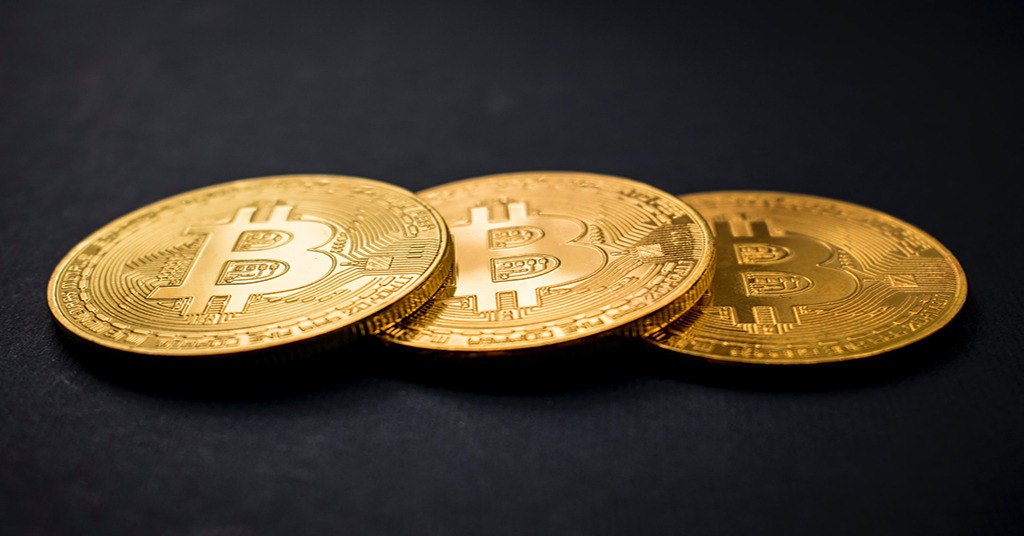Today we continue the series of crypto talks

How to trade crypto: 10 things you need to know. Source: unsplash.com
Now that you know how to buy crypto, you may be all excited about the trading opportunities. However, there’s no need to rush. Read this article first, to learn the ropes of crypto trading.
What do you need to know?
1. Crypto market is not for the timid
Trading crypto is risky and unregulated. Deal with it, or choose different investment ways. There are many low-risk assets out there. Cryptocurrencies, on the other hand, show extreme volatility on a permanent basis. Unlike traditional fiat money, crypto value isn’t managed by governments eager to maintain low inflation rates and satisfactory growth levels. In a decentralized economy, there’s no stabilizing authority. Therefore, cryptocurrencies may show rapid 1000% growth in value just to lose it overnight. The market reacts to news, geopolitical events, and all types of media hype.
The recent 40% soaring of a meme crypto Dogecoin fueled by Elon Musk’s jokes on Twitter is a vivid illustration. As a trader, you should be ready for that and stay calm. If you become overwhelmed by sudden price fluctuations, your trading decisions are likely to fail. Remember about your core strategy and use critical thinking. In a crypto world, you have to be alert all the time, but you also have to remain skeptical. Seek independent professional advice, if necessary.
2. How crypto trading differs from trading stocks
Trading your crypto assets may bring you substantial profits, but it’s not the same as trading stocks. Purchase of a share makes you a co-owner of a company and entitles you to legal rights, such as receiving dividends. In the crypto industry, only Security Token Offerings (STOs) grant the owner an equity share of a company. In other cases, there are no legal obligations and no strings attached in case of hacks. There’s still a debate whether cryptocurrencies should equal securities or fiat money in a legal sense.
Therefore, trading crypto is stuck in between the stock market and forex. A peculiar type of trading, day trading, is especially popular now. Day traders buy and sell financial instruments within the same day or even multiple times over the course of a day. Using daily fluctuations, they make money in a mode similar to gambling. The pandemic attracted more people looking for quick extra cash to crypto day trading. Not all of them succeeded, of course.
3. How crypto exchanges work
Sellers and buyers place orders on the exchange service. While buyers set the maximum price they are willing to pay for a token, sellers choose the minimal point of a possible sale. The exchange then acts as a matchmaker. Supply and demand are dictating the prices, so they may significantly differ at various platforms. Once a buyer has bought some crypto assets, the amount should be transferred to a crypto wallet.
Some exchanges host e-wallets on a single platform, but others don’t. After the purchase, you may trade crypto further, withdraw and spend it, or hold onto it, becoming a long-term investor. People who don’t want to trade directly, can use the services of a forex broker and buy a CFD (contract for difference). CFDs are complex instruments though and come with a high risk of losing money rapidly.
4. It’s not for free
When we speak of crypto gains, we mostly mean ups and downs of the currency’s value. However, many beginners forget to estimate all the fees incurred by crypto trading. When totaled, the sum may become exorbitant making your successful trading not as profitable as you expect. Choose the platforms with transparent fee structures. Some hidden costs may include unstated conversion fees, high spread fee, an instant transaction fee, deposit charges (these may come from both the exchange and your bank), withdrawal fees, etc.
You should also keep in mind the fees for maintaining crypto wallets, network fees for using the blockchain, premium advice, and market analysis services. Moreover, most popular crypto exchanges don’t create user-friendly interfaces for the sake of promoting the crypto culture. They charge more than open-source projects that may require certain tech-savviness.
5. Start with baby steps
There aren’t any safe bets in crypto trading. Hence, you have to be prepared to lose. Don’t invest large sums, especially in the very beginning. Start with small orders and see where it leads you. If you wish to trade in more money, place multiple orders and diversify your portfolio. There are many headlines prompting how you can become a crypto-millionaire overnight. However, only a few of them warn that 95% of traders lose money and fail. The truth is, the real road to building wealth is slow and steady.
Besides, you’ll make a lot of mistakes along the way. That’s the ultimate way to learn. Perhaps, trading is not really your thing and you’ll end up among the 80% of day traders who quit within the first two years of this experience. So, don’t put all your spare funds into it. At least, before you realize you’re fond of trading and good at it. Take one small step at a time, and increase the size of your crypto orders only when you’ve tested the waters with smaller transactions.
6. Set the limits and stop losses
Even if you trade directly and don’t entrust your funds to a brokerage, you should understand and make use of different order types. For example, stop-loss orders are placed with a broker to automatically sell a specific stock once it reaches a certain price. Its purpose is to limit the financial losses at the point you’re still comfortable with them. For instance, the initial purchase price may be set as the minimum selling point. This will ensure that you won’t get carried away by gambling excitement and will end up at least with what you invested in the first place.
Limit orders allow you to specify the maximum price you are willing to pay for a cryptocurrency. This technique prevents you from paying more than you expected if the price increases while your order is being filled. Even if you place an ordinary market order, decide on the minimum/maximum prices beforehand. Another useful threshold to set is the amount of profit enough for you to withdraw while day trading. Having a clear financial goal is essential to crypto trading with its value rollercoaster.
7. Ignorance is your enemy
The problem with cryptocurrencies is that the market is pretty obscure. Apart from few tech developers, not many people truly understand how decentralized networks function, what forms the market trends, and what prospects different currencies have. Hence, many retail crypto traders make their buying and selling decisions based on the affordability of the token. They don’t bother to evaluate the coin’s market cap, check price charts, expert opinions, etc. They can even fall for scams.
For instance, many crypto ICOs have no real business plans or technology behind them, but when you have no technology or industry experience yourself, you’ll easily believe unsubstantiated claims. Traders should get as educated about the crypto asset they prefer as they can. Use multiple sources to see the market position of the coin from various viewpoints. Don’t rely on peer forums only, track reliable fintech media, insights from professional agencies, etc. Place reading market updates on your daily agenda. You should also check reviews about brokers and exchanges before opening any trading accounts.
8. When to sell or buy
While nobody can accurately predict what crypto will do in the future due to the volatility of the market, historical data can at least hint at potential movements. Every cryptocurrency that has been on the market for a while, has some kind of a pattern. For instance, Bitcoin usually acts similarly after every halving event. Knowing that will give you a clue when to sell or buy tokens. Moreover, traders can track how different crypto assets behave in response to Bitcoin’s highs and lows.
Thus, it’s widely assumed that ETH usually follows BTC, like most altcoins. However, there are some rare crypto assets that don’t strongly correlate with the Bitcoin course. Moreover, 2020 has shown alternative tendencies of modest altcoin growth amidst the Bitcoin momentum. Therefore, ordinary observation of current market trends may not give you as many trading insights as a sophisticated technical analysis of a crypto’s chart.
9. Be a part of the crypto community
As the recent GameStop investing frenzy showed, communities and social networks may gather enough buying power to outweigh large institutional investors. Whether a short-term trend or not, understanding the community spirit is not to be ignored at all times.
10. Emotional intelligence
Trading is akin to gambling in many ways. Not only do you put your money at stake, but also you should put your poker face on. Don’t even start trading if you can’t master self-control. Fear, greed, extra excitement, hope, anxiety, and even boredom may misguide you if you don’t understand your own feelings, so work on your EQ. An important lesson from Warren Buffett is to be “fearful when others are greedy, and greedy when others are fearful.” It’s impossible with emotional trading. The best option to stay cool and trade emotionlessly is to automate your crypto trading with bots. If you are not familiar with what trading bots are, you pick up some good insights here.
SEE ALSO:
- Iceland’s ‘Big Bitcoin Heist’: how it happened
- Top 10 crypto-friendly cities in the world
- How to track a bitcoin transaction
When entering the crypto market, understanding market liquidity is crucial. Liquidity refers to how quickly and easily a cryptocurrency can be bought or sold without affecting the asset’s price. High liquidity in an exchange or market makes trading faster and more efficient, which often results in a more stable market price. Conversely, low liquidity can lead to a highly volatile market as large trades can sway prices more easily.
Technical analysis is another essential tool for crypto traders. This method involves studying statistical trends gathered from trading activity, such as price movement and volume. Unlike fundamental analysis, which attempts to evaluate a security’s value based on business results such as sales and earnings, technical analysis focuses on the study of market actions, primarily through the use of charts, for the purpose of forecasting future price trends.
Further, leveraging a cryptocurrency’s unique use cases can also guide investment decisions. For example, Ethereum has pioneered the concept of a blockchain smart contract platform. Smart contracts are used to automate the execution of an agreement so that all participants can be immediately certain of the outcome, without any intermediary’s involvement or time loss. This aspect of Ethereum creates different investment opportunities compared to purely transactional cryptocurrencies like Bitcoin.
An important trend to consider is the increasing tokenization of real-world assets. Tokenization is the process of converting rights to an asset into a digital token on a blockchain. The potential for tokenizing everything from real estate to artworks to stocks is immense and could revolutionize many sectors by making transactions quicker, easier, and more secure. This trend could drive the adoption and value of certain types of cryptocurrencies and blockchain platforms.









